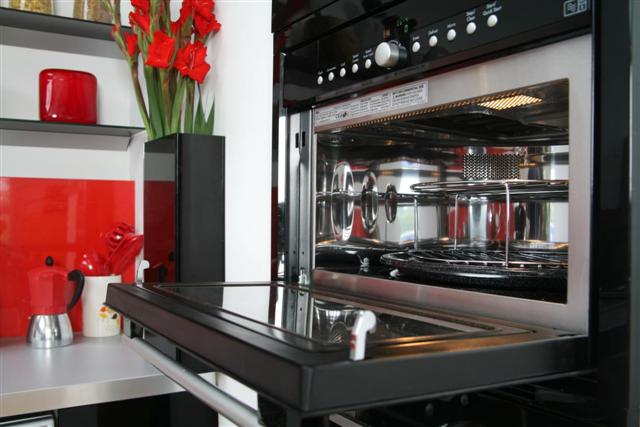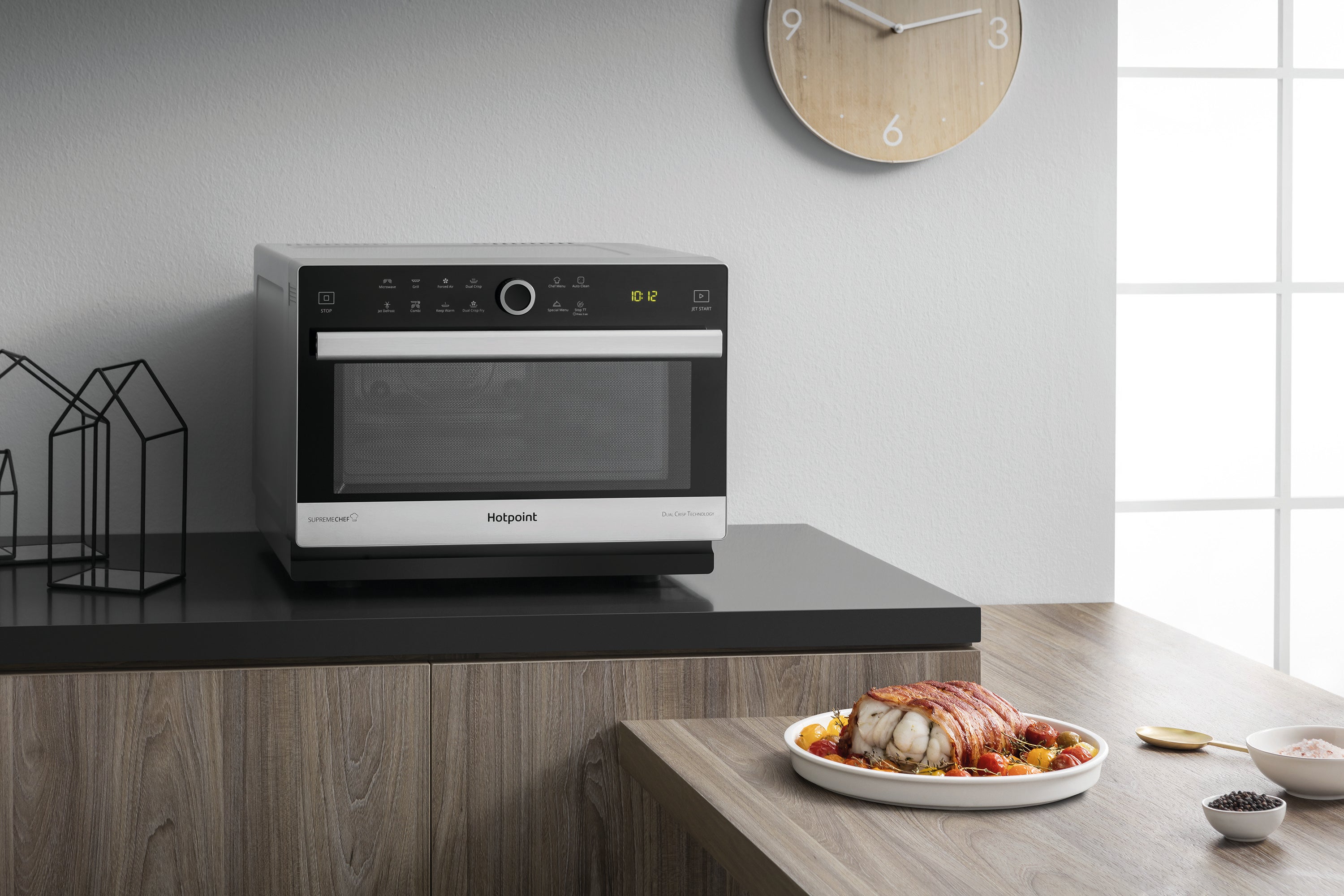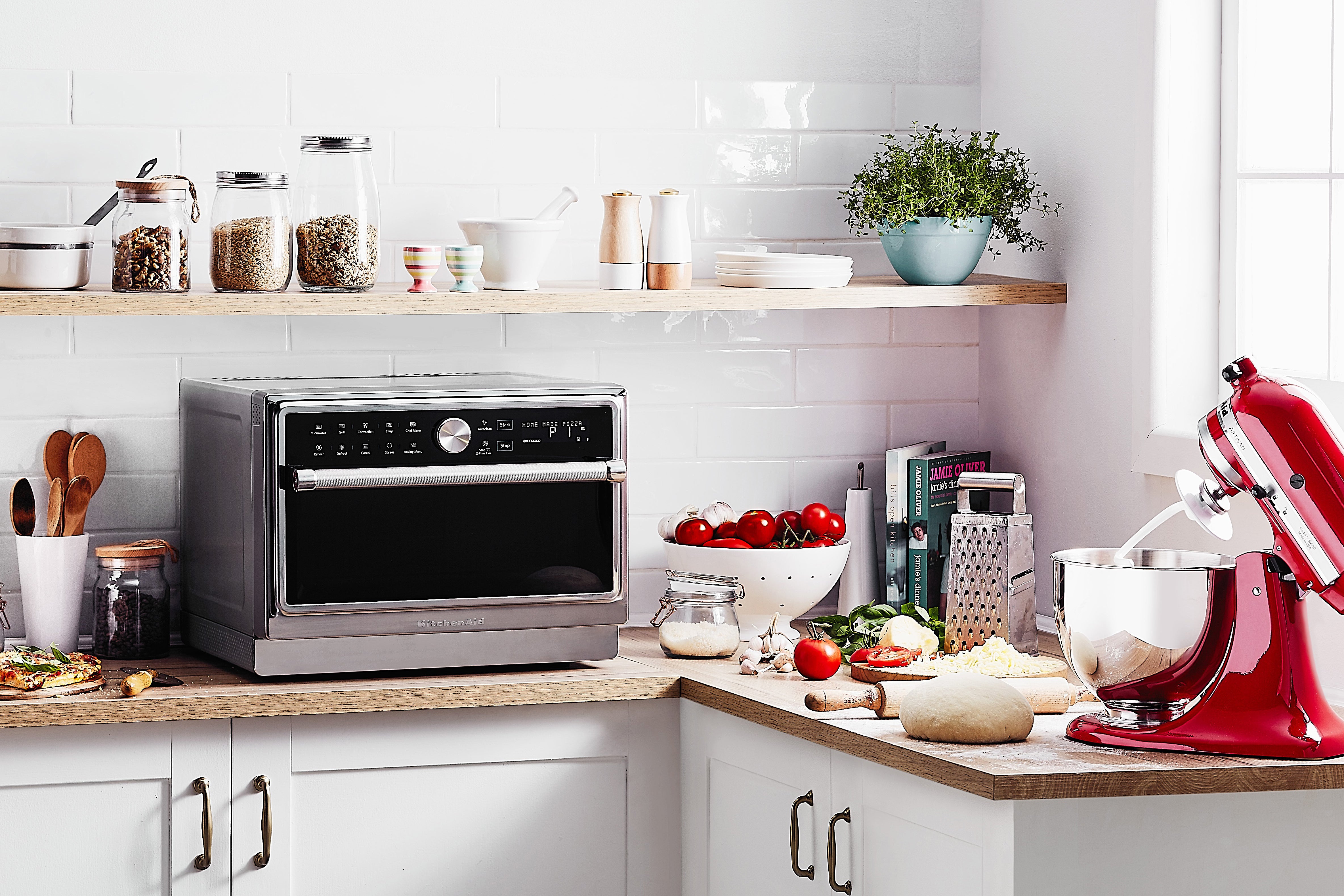How to defrost in a microwave

Most microwaves have a defrost cycle, so it’s easy to think that thawing out food with one is as simple as popping it in and letting the machine do the work. Unfortunately, as the microwaves penetrate food from the outside inwards, the challenge is always how to defrost the middle without cooking and drying out the exterior. But don’t give up on your microwave yet – here’s how to defrost everyday foods without disappointment.
Related: Best microwaves
1. Poultry, fish and pieces of meat
The trick to defrosting meat and chicken in a microwave is down to how it’s been frozen. Large lumps of meat will never defrost evenly, so when you’re preparing the food for freezing, arrange it in a single layer, ideally no thicker than 5cm deep. If you need to add more, separate the layers with cling film or baking parchment so you can pull them apart easily before placing in the microwave. If there are any thin ends, you may be able to shield these with tiny pieces of aluminium foil – check your microwave’s manual for advice on using foil as it differs from model to model.
Remove any packaging, then arrange the meat or chicken with the thicker parts facing outwards and the thinner parts in the centre, in a single layer. Turn it every couple of minutes, and check on the food’s progress while it’s being defrosted – if it looks like it’s starting to cook, take it out. You should also allow sufficient standing time (anywhere between 15-30 minutes) to even out the temperature. The aim is thawed meat or poultry that’s still cool when you finish defrosting it. Cook thoroughly defrosted meat and poultry straight away.

2. Minced meat
Ideally, you’ll have frozen this in a thin layer, but if you haven’t, you can still ensure more even results than blitzing and hoping for the best. One way is to keep checking on your frozen block as it defrosts and removing the thawed parts that come away easily – about every 30 seconds to a minute. This creates more frozen surface area for the microwaves to penetrate and saves your already defrosted outer parts from starting to cook. Alternatively, if you can, break the mince up into pieces once it’s started to thaw. Once defrosting has finished, leave to stand for about 15 minutes. You can also use this technique for shellfish, such as prawns.
3. Bread
Bread defrosts quickly and will keep thawing once it’s been microwaved, so use your defrost programme in moderation. For a slice, place on a sheet of kitchen towel to absorb the build-up of steam, and defrost for up to 50 seconds, then leave to stand for a couple of minutes. For a whole sliced loaf, separate the slices as they defrost and keep rearranging so the more frozen parts are facing outwards.
Related: Best bread maker

4. Fruit and vegetables
While fruit and vegetables won’t be affected as much as meat if they start to cook a little, it’s still best to keep defrosting to a minimum. If they’re small pieces frozen in a lump, stir every minute or two and break up into smaller chunks as it defrosts. If you’re thawing a vegetable that has different sized ends, such as broccoli, place the thicker part facing outwards. Then allow about 15 minutes standing time.

